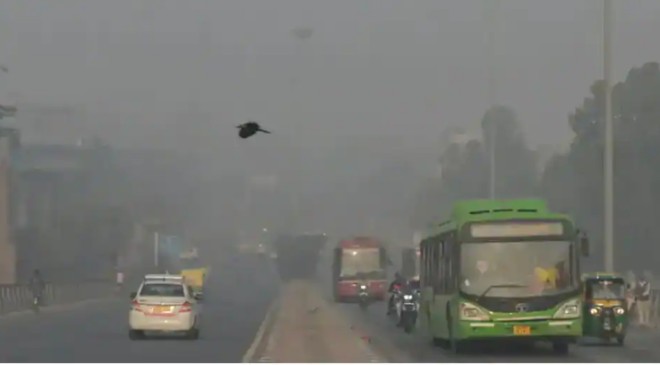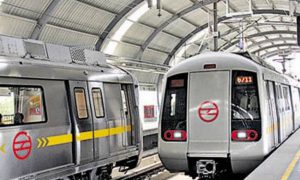NCR offices are advised to implement 50% capacity on-site, with the remaining workforce working remotely.
The deteriorating air quality in Delhi has prompted the enforcement of GRAP Stage 4 restrictions starting Monday, as the city’s Air Quality Index (AQI) hit 457 at 7 PM on Sunday, crossing into the “severe plus” category. These measures aim to curb emissions and mitigate health risks as pollution levels reach alarming highs.
GRAP Stage 4 Restrictions in Delhi: What’s Banned?
- Diesel Vehicles: Medium and heavy goods vehicles registered in Delhi with BS-IV or lower standards are banned, except for those transporting essential goods.
- Non-Essential Commercial Vehicles: Entry of non-essential light commercial vehicles from outside Delhi is prohibited unless powered by CNG, BS-VI diesel, or electricity.
- Trucks Carrying Non-Essential Items: Trucks not operating on LNG, CNG, or BS-VI diesel are barred from entering the city.
Schools and offices
Classes 6 to 9 and Class 11 are recommended to shift online by the Commission for Air Quality Management (CAQM). Futhermore, NCR offices are advised to implement 50% capacity on-site, with the remaining workforce working remotely.
Read More: AQI Remains ‘Severe’ In Delhi, Haryana Announces Partial School Closure
Odd-even policy to be back?
The implementation of odd-even vehicle regulations could also be explored as part of efforts to curb pollution levels. Additionally, state governments may consider measures such as closing non-essential commercial activities.
The CAQM has urged residents of Delhi-NCR to actively support the implementation of GRAP measures to combat rising pollution levels. Citizens are advised to limit outdoor activities, particularly for children, the elderly, and individuals with respiratory or cardiovascular conditions, to minimise health risks.
What is GRAP-4?
The Stage-IV response includes an 8-point action plan aimed at addressing the severe pollution levels in Delhi. Among the key measures is the restriction on non-essential truck traffic entering the city, with exceptions made for vehicles transporting essential goods or providing vital services. These actions are part of a broader effort to control emissions and improve air quality, as the city grapples with a critical air pollution crisis.
Read More: Amit Shah Cancels Poll Rallies In Maharashtra, Rushes Back To Delhi For This Reason
Delhi’s AQI deteriorates
Delhi’s latest AQI data from the Central Pollution Control Board (CPCB) reveals alarming pollution levels, with 32 out of 34 monitoring stations reporting “severe” air quality above 400. AQI levels between 401 and 450 are classified as “severe,” while readings exceeding 450 fall into the “severe plus” category. Such levels pose significant health risks, particularly for those with pre-existing conditions, and can also impact healthy individuals.
The Centre’s Decision Support System for Air Quality Management attributes 15.8% of Delhi’s air pollution on Sunday to vehicular emissions, highlighting the role of transportation in exacerbating pollution. Meanwhile, stubble burning accounted for a substantial 25% of total pollution on Saturday, further worsening the air quality.
The dominant pollutant, PM2.5, consists of microscopic particles that penetrate deep into the lungs, presenting severe health risks such as respiratory and cardiovascular issues. These factors underscore the urgency of implementing stricter air quality management measures.



































